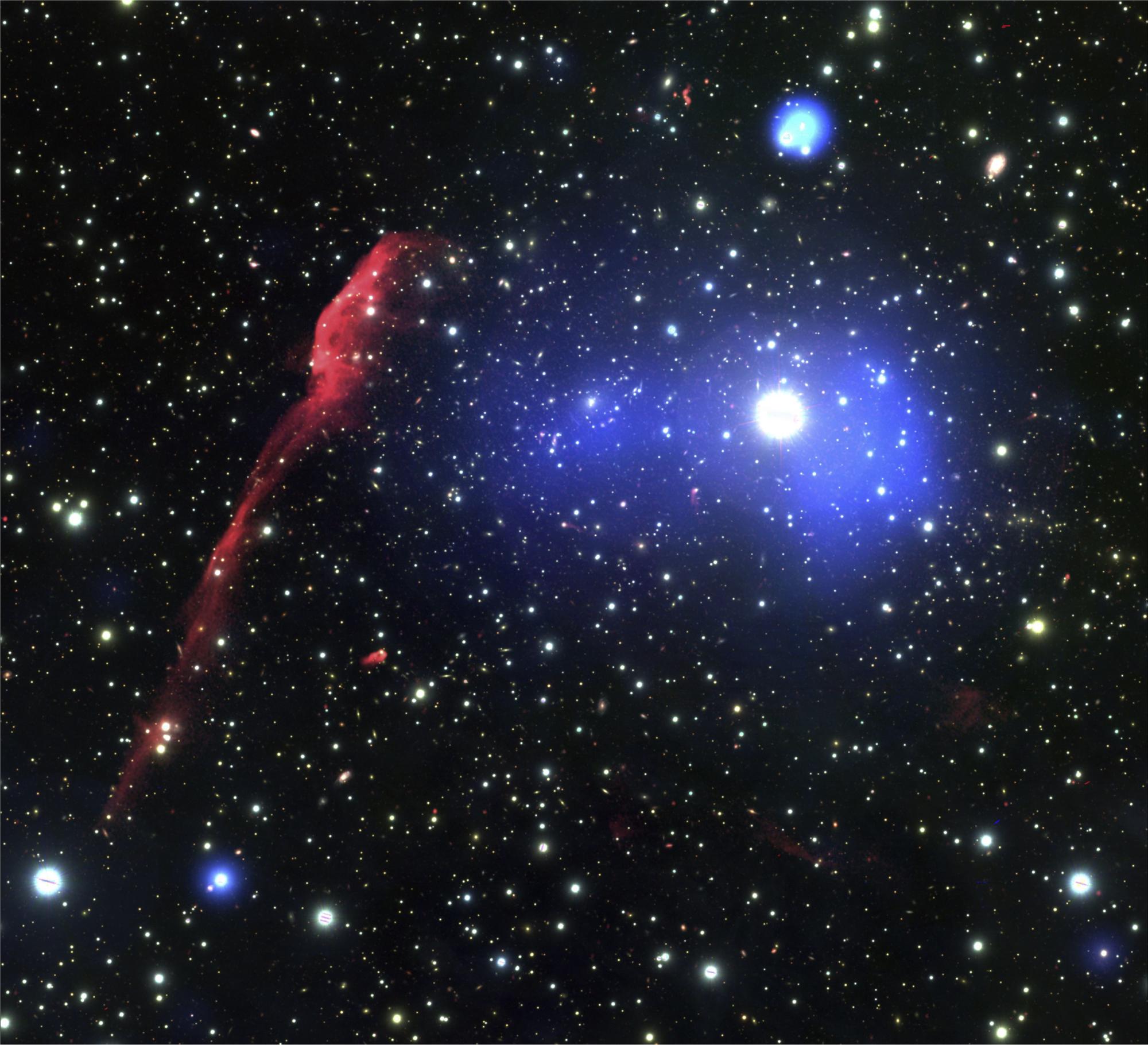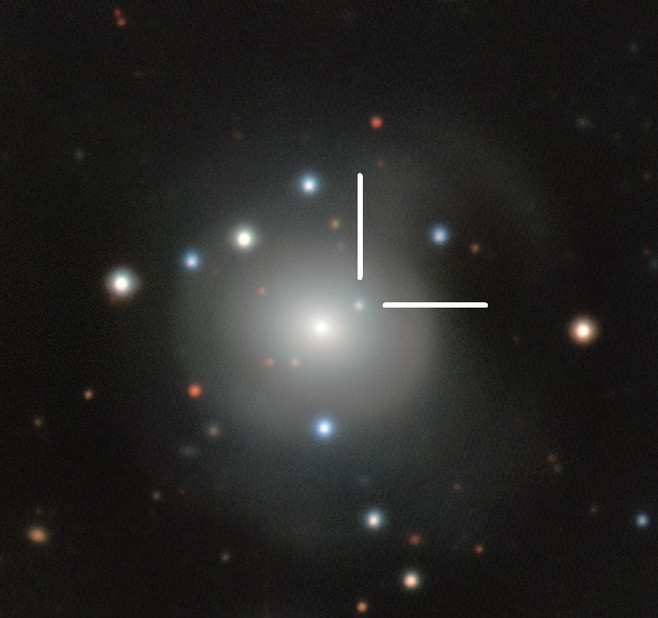Galaxies, Galaxy Clusters, Quasars
Gamma-Ray Bursts
Galaxies, Galaxy Clusters, Quasars
| Galaxy clusters consist of up to several thousand galaxies. However, only a small fraction of the cluster's mass is contained within the galaxies themselves. The majority of the mass is located between the galaxies and forms the cluster's gas, a highly diluted and hot medium. Dark matter causes galaxies and the cluster's gas to be gravitationally bound and unable to escape the galaxy cluster. Galaxy clusters continue to grow continuously due to the continuous influx of galaxies and groups of galaxies | Occasionally, two equally sized clusters merge to form a new one. During these events, spectacular shockwaves occur in the cluster's gas, raising its temperature significantly. Subsequently, the cluster's gas enters a turbulent state. Both the shockwaves and turbulence can accelerate electrons to very high energies. These accelerated electrons then emit radiation in the radio wavelength range due to magnetic fields in the cluster's gas. The TLS (Thüringer Landessternwarte) participates in the international radio telescope LOFAR to detect and study such events. |

| Since light travels at a finite speed, looking into the depths of space is also a look back into the history of the universe. In recent decades, it has become possible to observe so deeply into the universe that observations can reveal cosmologically relevant developmental effects. On large scales, the cosmic structure is shaped by galaxies and galaxy clusters. Like our Milky Way system, galaxies consist of an ensemble of billions of stars, interstellar gas, dust, and enigmatic dark matter. | In the early stages of the cosmos, galaxies did not yet exist. How and when they formed and how they evolve are among the most intriguing questions in astronomy. Galaxies go through phases of extremely intense activity, manifesting as a starburst, a phase of intense star formation, or an active galactic nucleus. The latter forms when matter falls into the supermassive black hole at the center of a galaxy and emits intense radiation. The most luminous active galactic nuclei, known as quasars, are among the brightest objects in the universe. TLS is involved in several quasar projects, including search missions in various spectral ranges, with the aim of better understanding the physical processes in quasars and their significance for galaxy evolution |
Gamma-Ray Bursts
| A series of cosmic phenomena have a distinctly catastrophic nature: some stars can explode as supernovae at the end of their evolution, emitting the luminosity of an entire star system for weeks. Others can flare up as novae in the sky due to thermonuclear explosions on their surfaces. Of particular interest are those massive star explosions that predominantly occur in the high-energy gamma-ray wavelength range, which is not accessible to the naked eye—the gamma-ray bursts first discovered in the 1960s with military satellites. These are extremely intense cosmic brightness bursts in the gamma-ray range that last only seconds. It was only in the late 1990s, after around 30 years of intensive global research, that these bursts and their aftereffects were also detected in the optical range. These are likely stellar explosions in distant galaxies, leaving behind stellar black holes as end products—objects that were considered purely exotic ideas of theoretical physics just a few decades ago. |
|
Scientific interest in the nature of cosmic gamma-ray bursts would probably not be as pronounced if the associated luminosities were not so outstanding. Since 1999, it has been known that these bursts represent the brightest candles in the entire universe. Their luminosities can surpass the luminosity of entire galaxies by orders of magnitude for a brief period, guiding us towards the early phases of the universe after the Big Bang. Surprisingly, the brightest bursts can even cause detectable disturbances in Earth's ionosphere, despite these radiation sources being billions of light-years away. Thüringer Landessternwarte has been highly successful in the worldwide exploration of the nature of these sources for years, with numerous scientific publications and a series of completed diploma and doctoral theses incorporating these results.
Read more about Gamma-Ray Bursts


